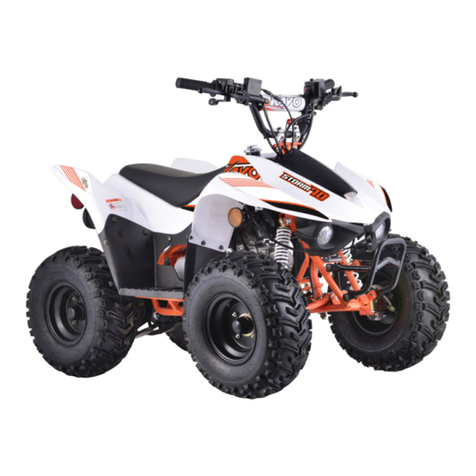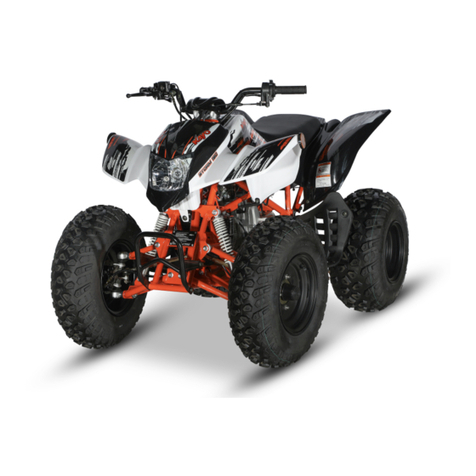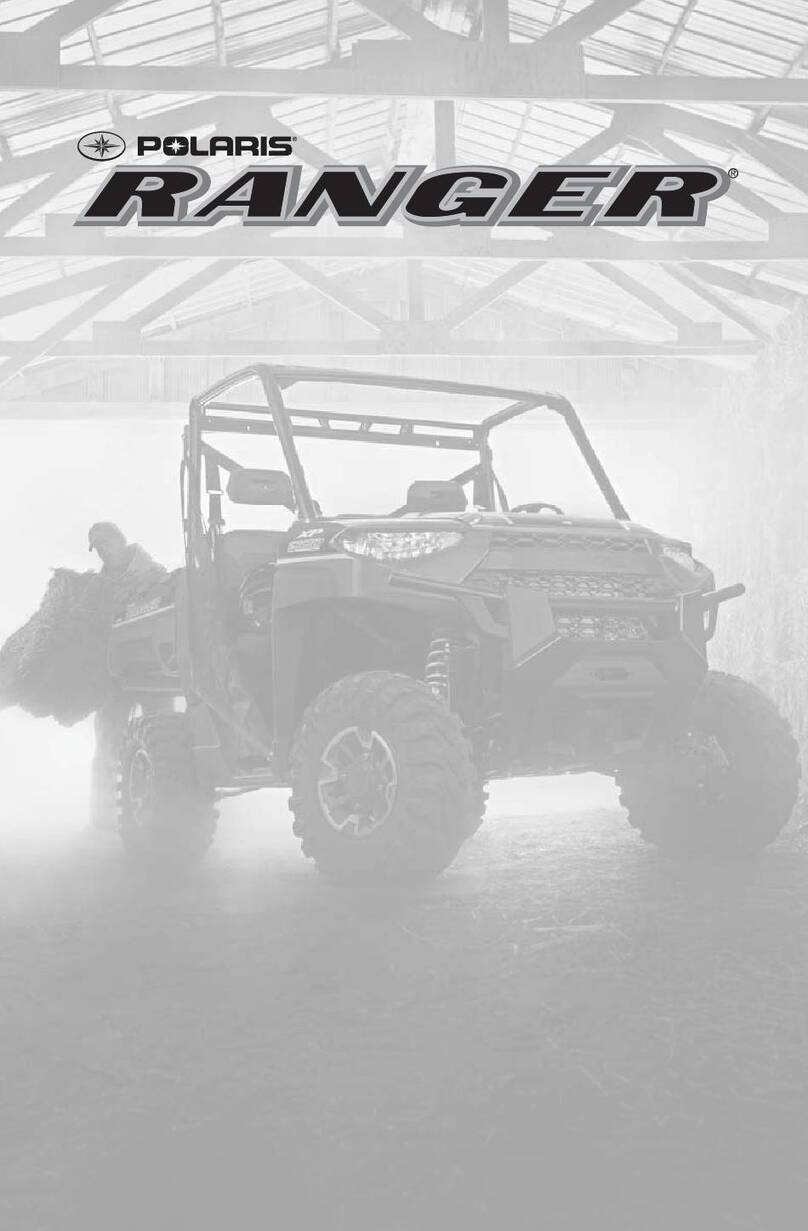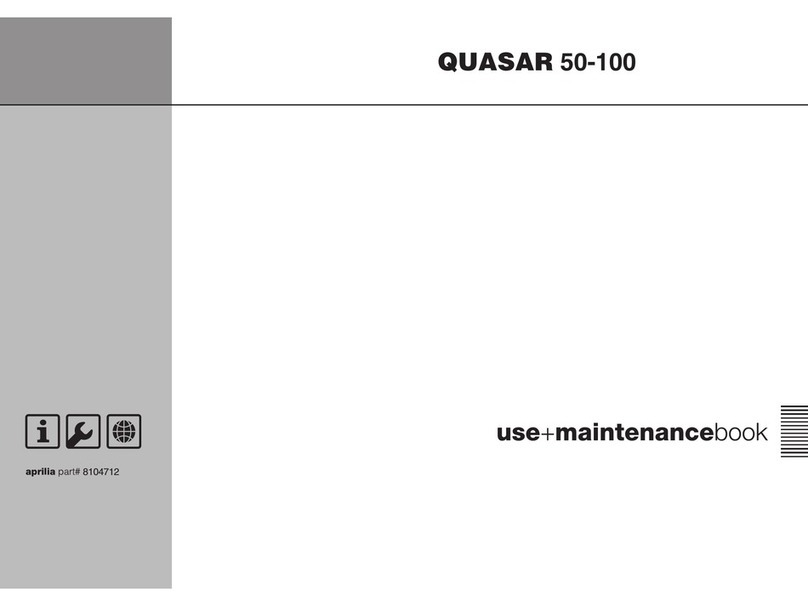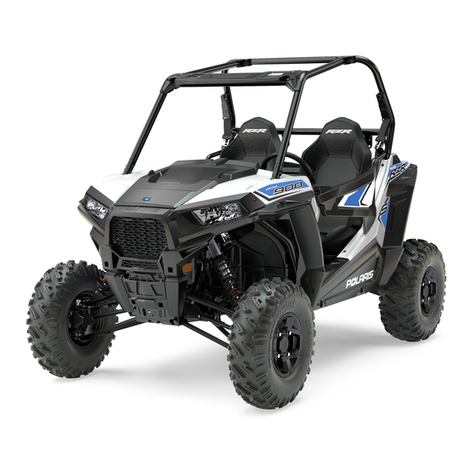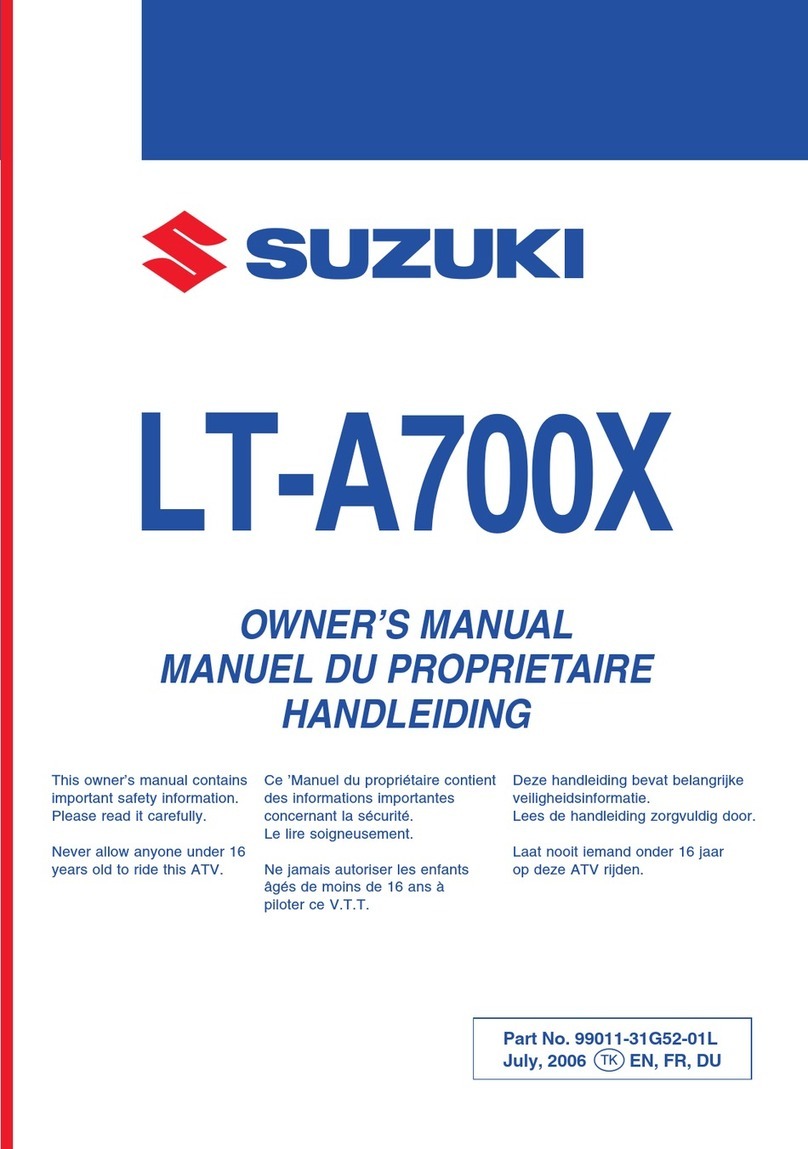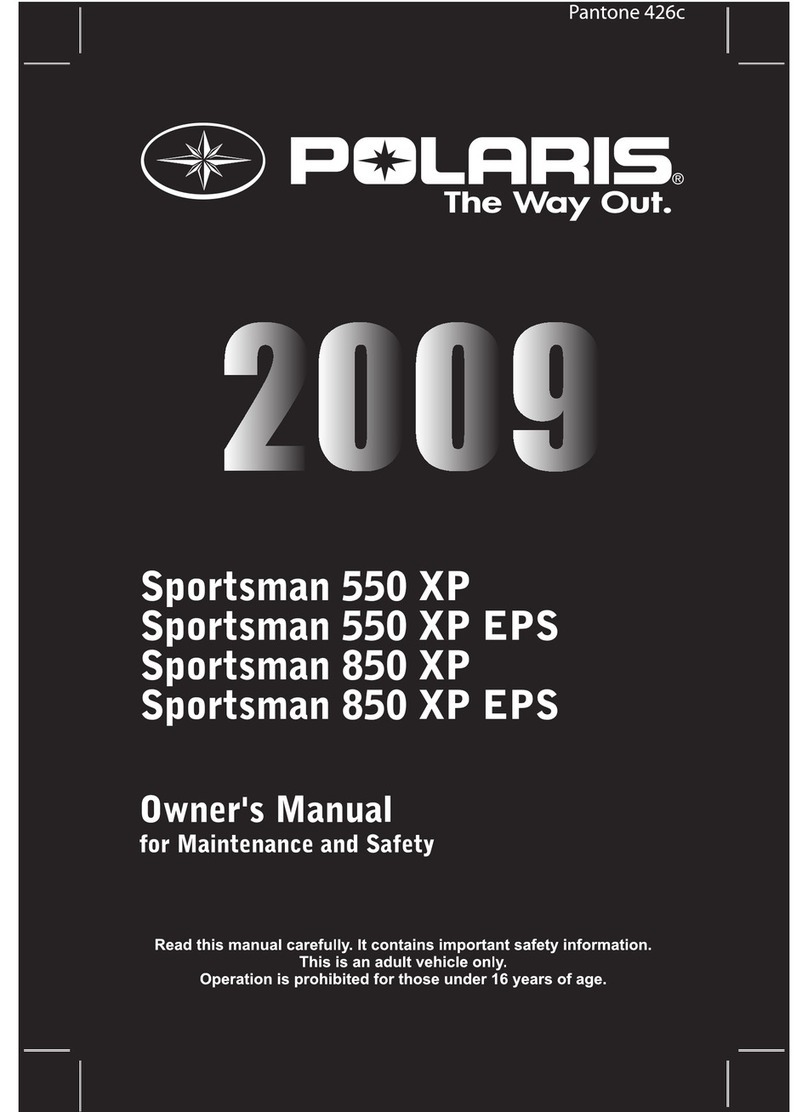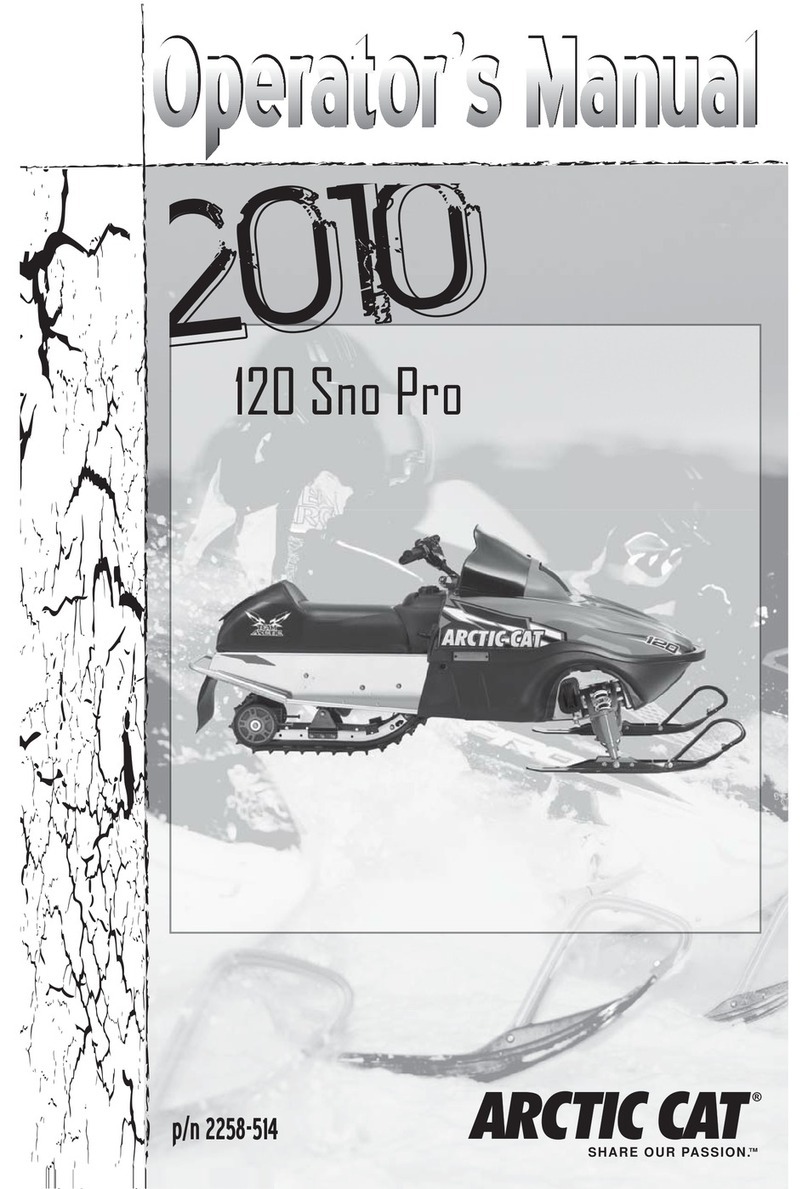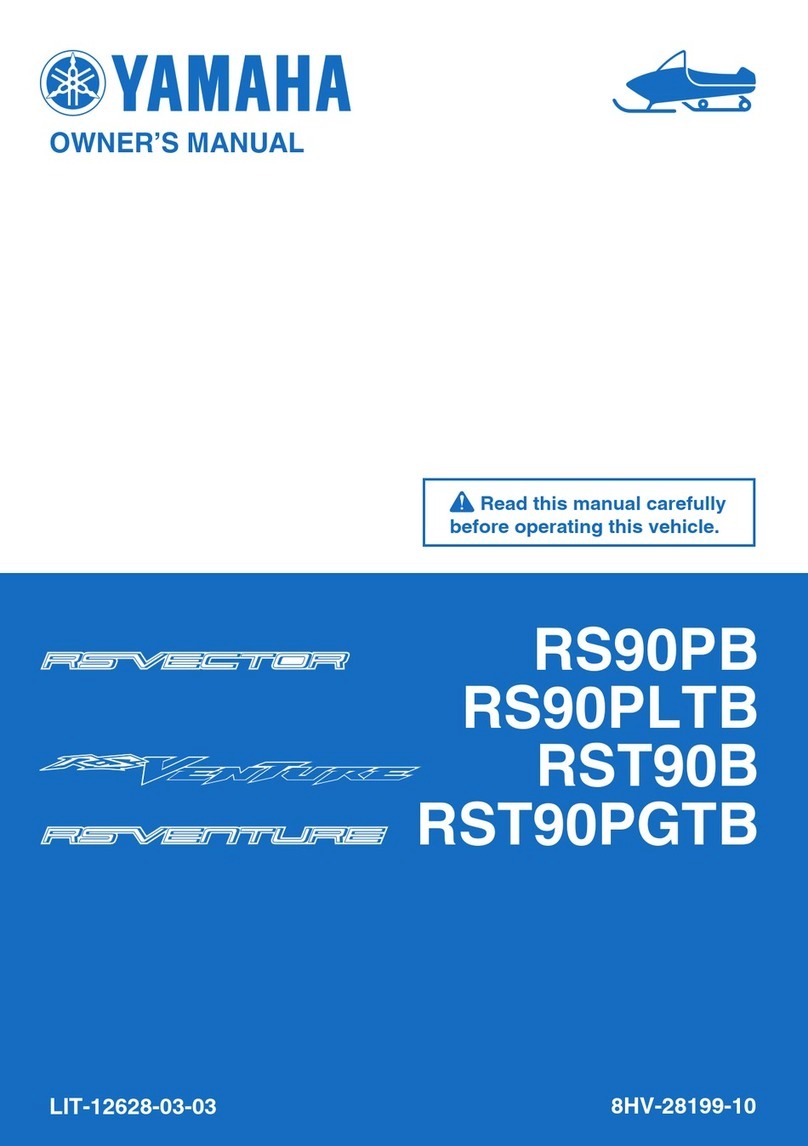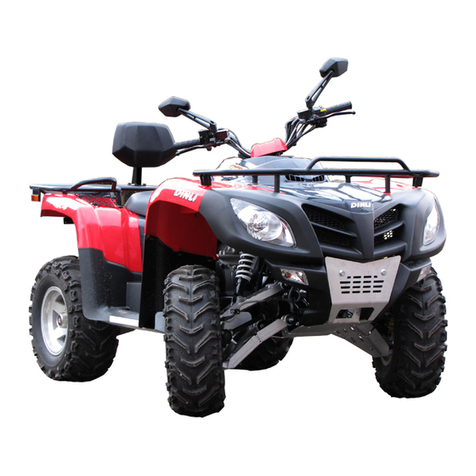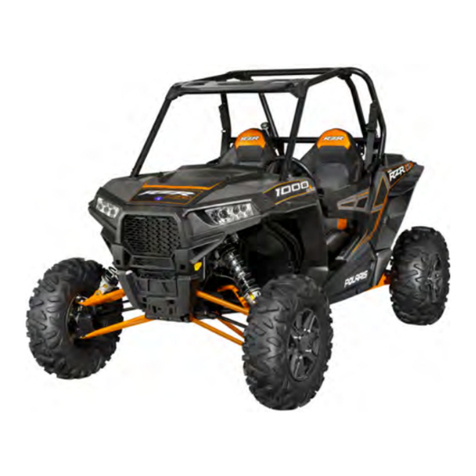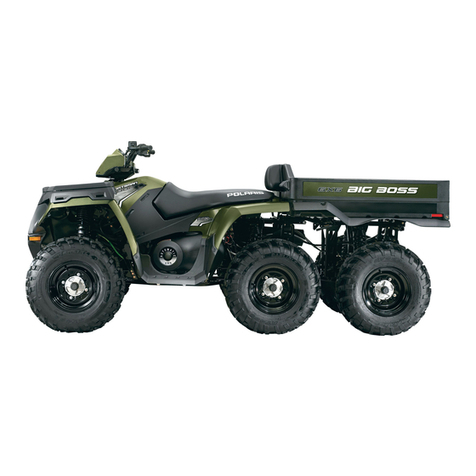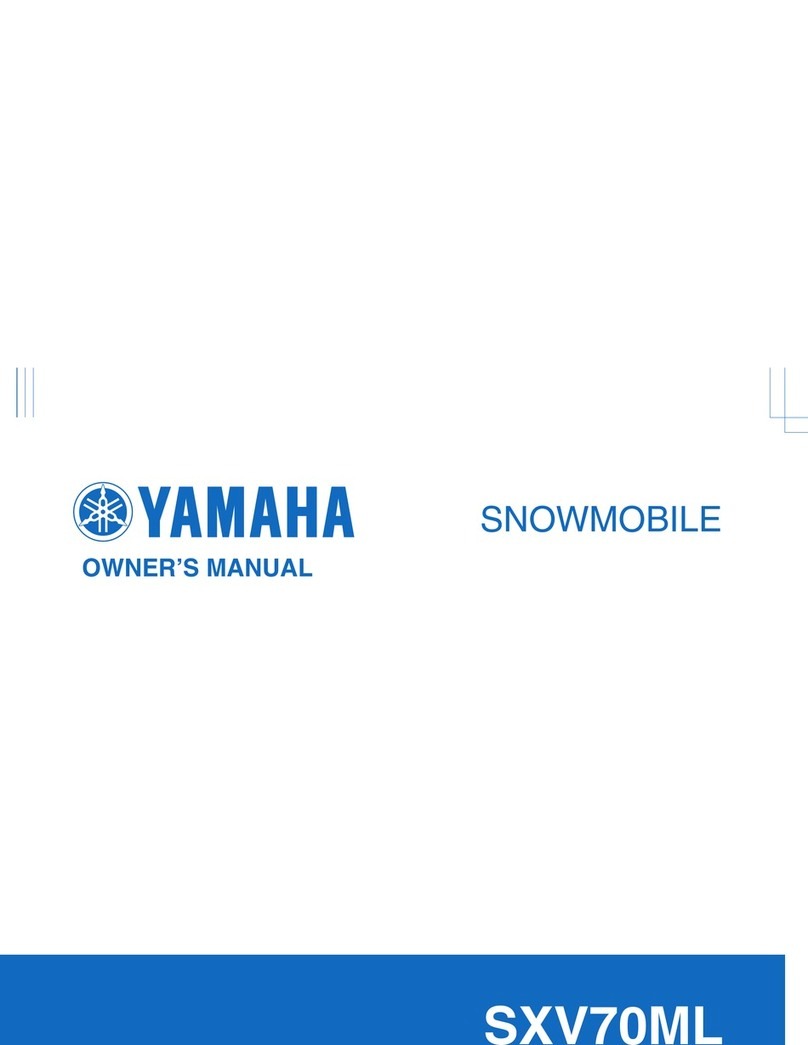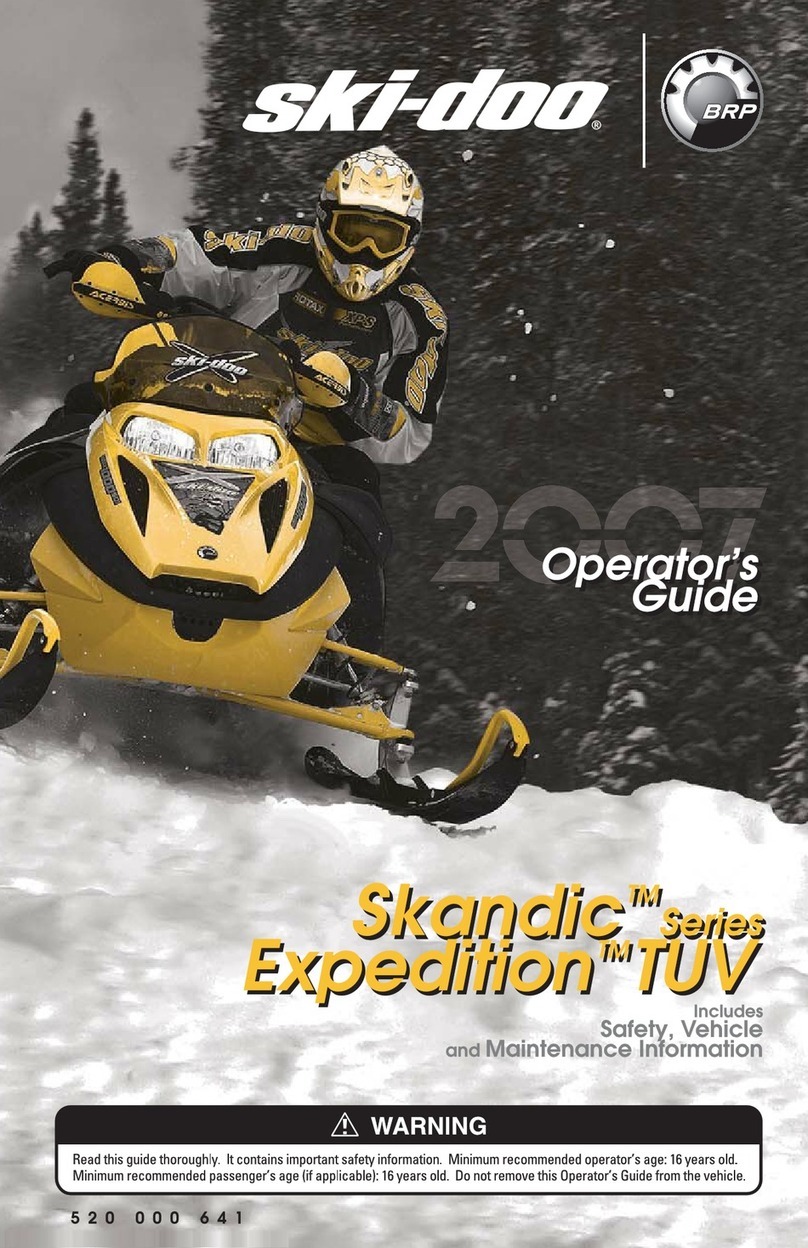
Zhejiang Kayo Motor Co., Ltd.
1-
It was originally a tight fit with the body or the shaft diameter, but if the fit is not tight after
disassembly, the bearing should be replaced.
13. Bearings should be coated with engine oil or grease before assembly. Pay attention to the
installation direction when assembling single-sided dust-proof bearings. When assembling open-type
or double-sided dust-proof bearings, install the side engraved with the manufacturer's logo and size
facing outward during assembly.
14. When installing the rectangular retaining ring, the chamfered side should face the direction of the
force. Do not use the retaining ring that has been loosened and lost its elasticity. After assembly, turn
the rectangular retaining ring to confirm that it has been firmly installed in the groove.
15. After assembly, it is necessary to check whether all fastening parts are tightened and whether the
work is normal.
16. Brake fluid and coolant can damage the coating surface, plastic parts, rubber parts, etc. Do not let
them adhere to these parts. In box of adhesion, rinse them with water immediately.
17. The oil seal should be installed with the side marked by the manufacturer facing outward (in the
direction without oil):
When assembling, pay attention not to curl the lip of the oil seal or scratch the lip of the oil seal
with burrs.
Apply lubricating grease to the oil seal lip before assembly.
18. When installing rubber hose parts, insert the rubber hose to the root of the joint. If there is a pipe
clip, install the pipe clip in the dent of the pipe. Replace the rubber hose that is not tight during
installation.
19. Do not get dust, mud, etc. into the interior of the engine or the hydraulic system of the brake.
20. The gasket materials attached to the joint surfaces of the engine boxes must be cleaned before
assembly, and the scratches on the contact surfaces must be evenly polished and removed with an oil
stone.
21. Do not twist or bend the cables excessively. A deformed or damaged cable may cause poor
movement or damage.
22. When assembling protective cap parts, if there is a groove, the protective cap must be inserted
into the groove.
Running-in of the engine
The engine has many parts that do relative motion, such as pistons, piston rings, cylinder blocks, and
transmission gears that mesh with each other, etc. Therefore, in the early stage of its use, it is
necessary to carry out standardized running-in. Running-in can make the moving parts adapt to each
other, correct the working gap, and form a good smooth friction surface that can withstand heavy
loads. An engine that has been run-in according to specifications can have excellent performance and
reliability.
The recommended break-in time is 10 hours, with the following specifications:
0 to 10 hours: avoid continuous operation with more than 1/2 throttle, and change the speed
frequently. It is not recommended to run for a long time at a fixed throttle position; after every 1 hour


